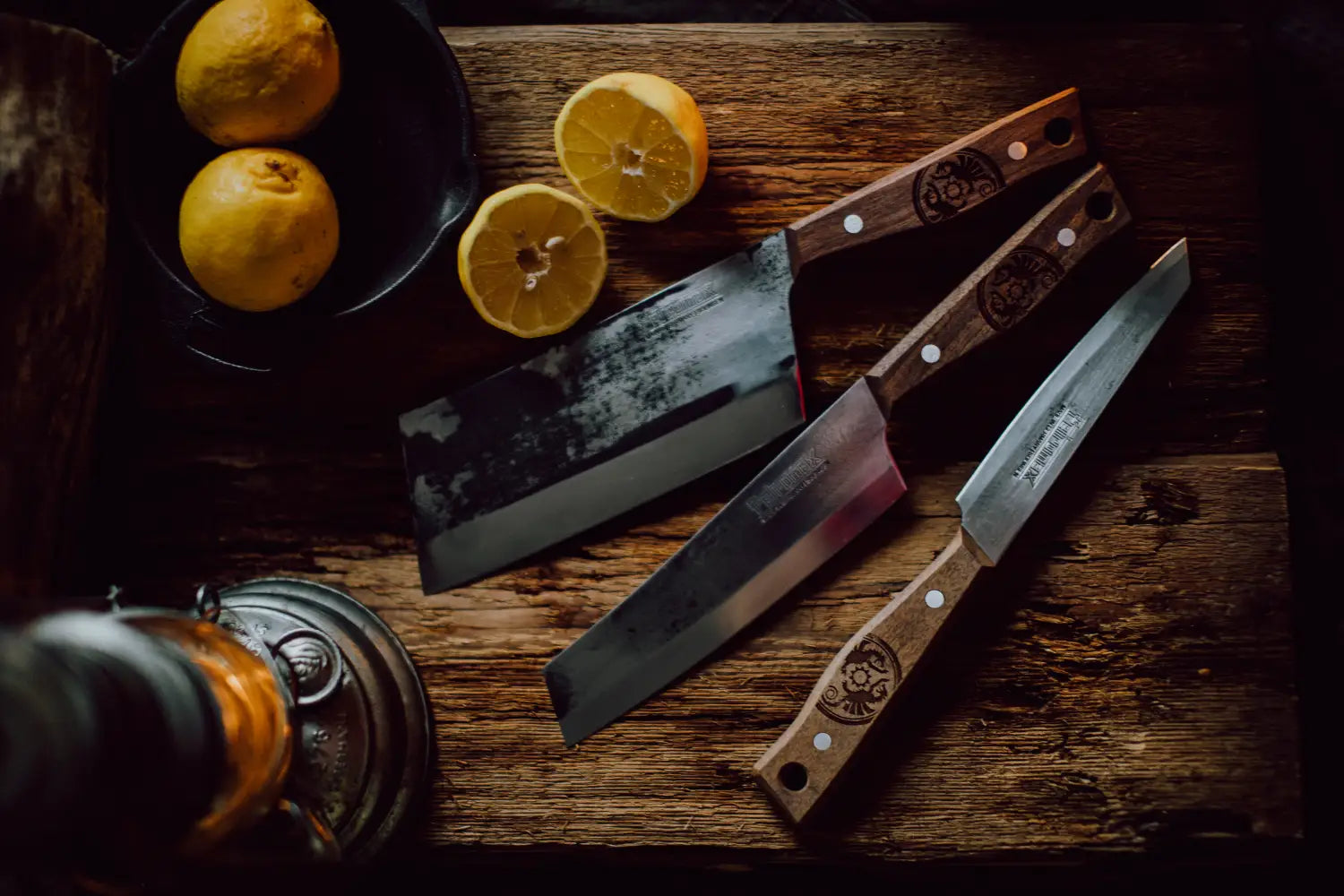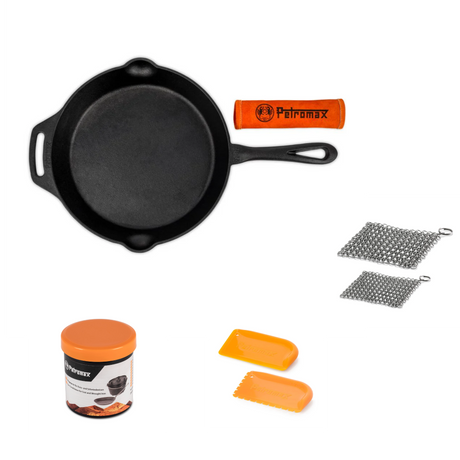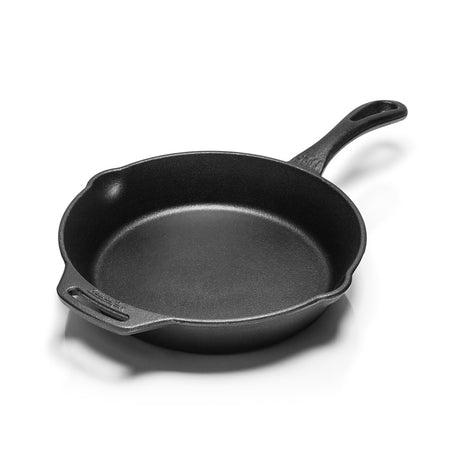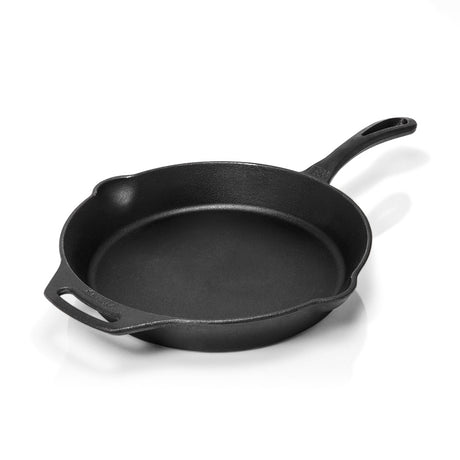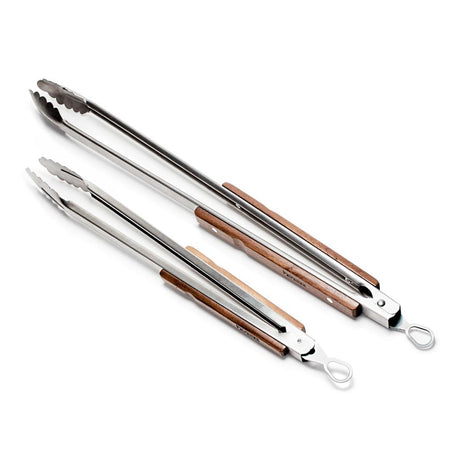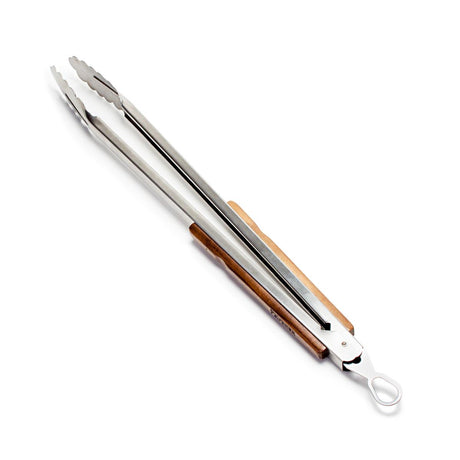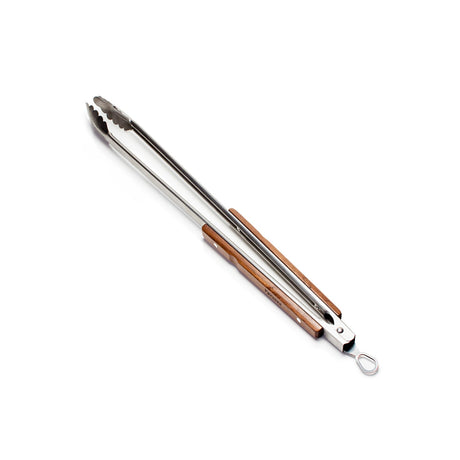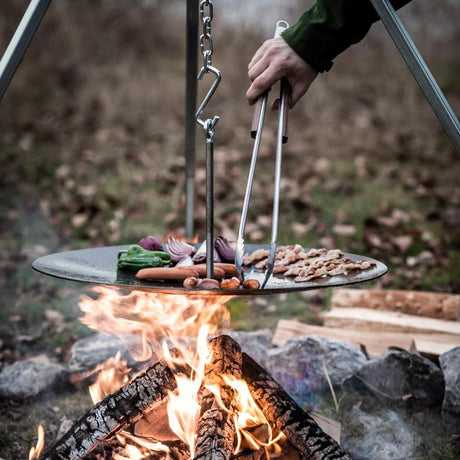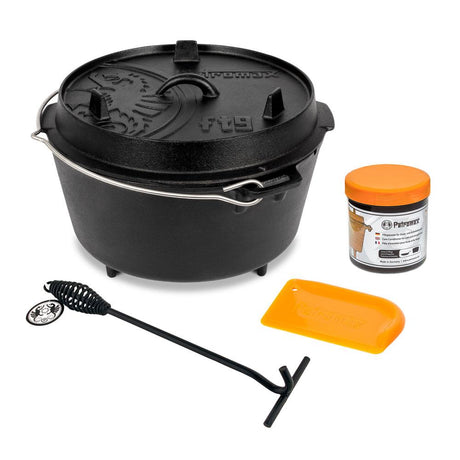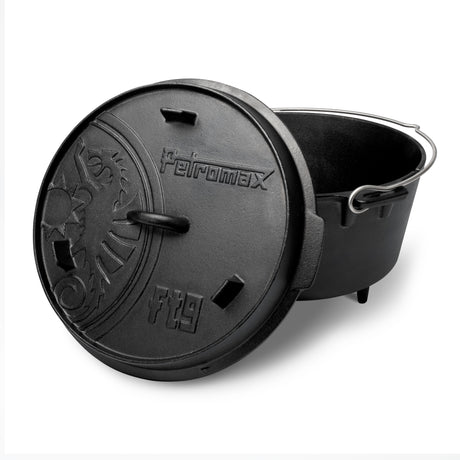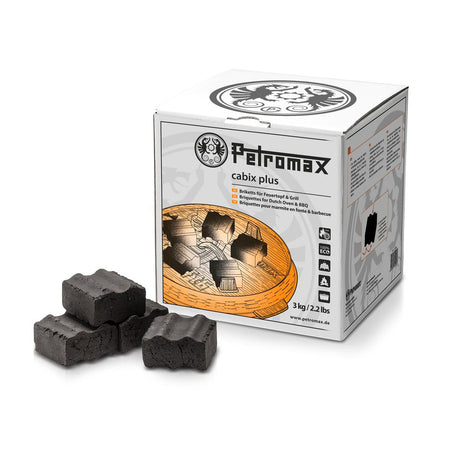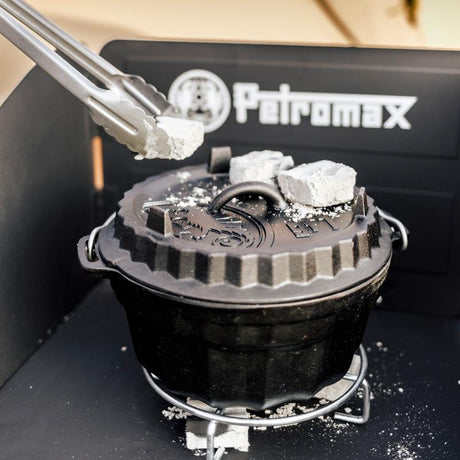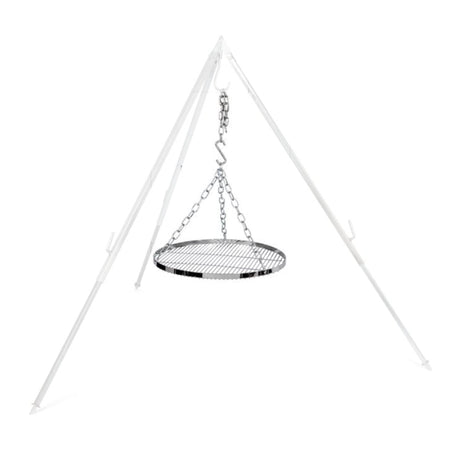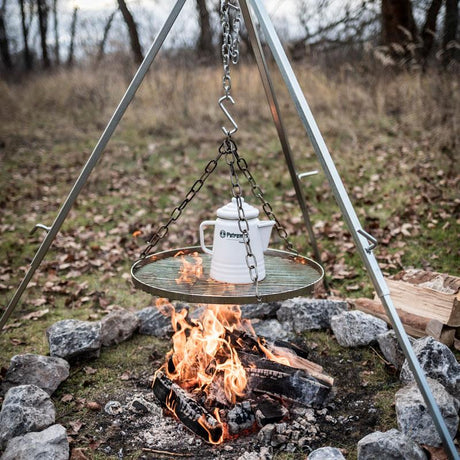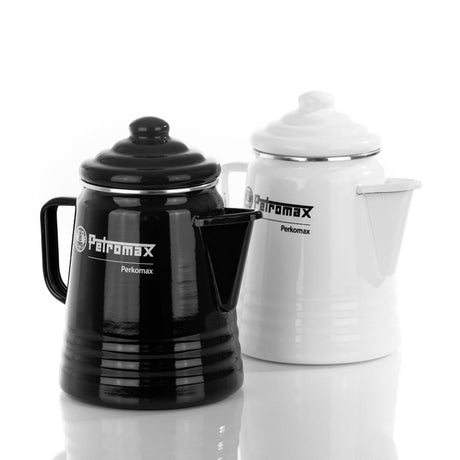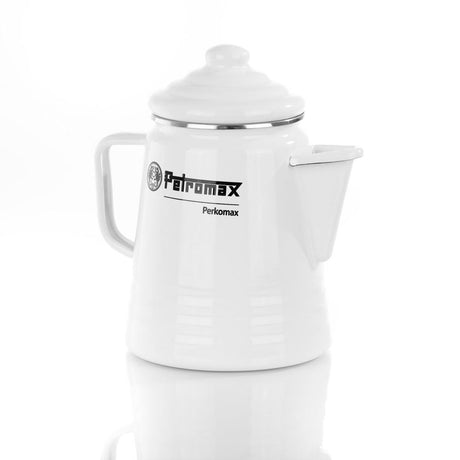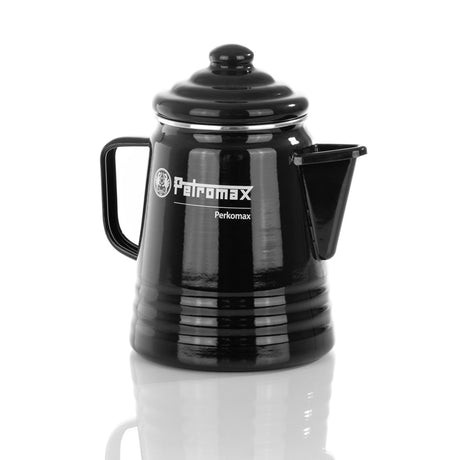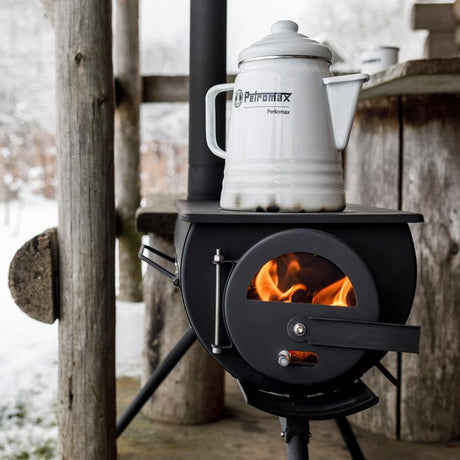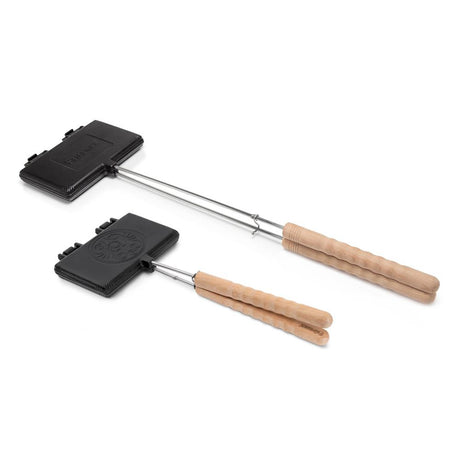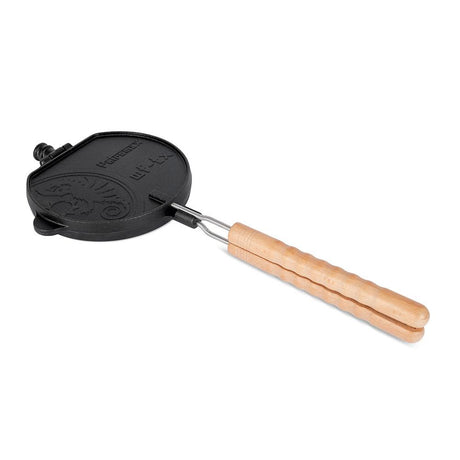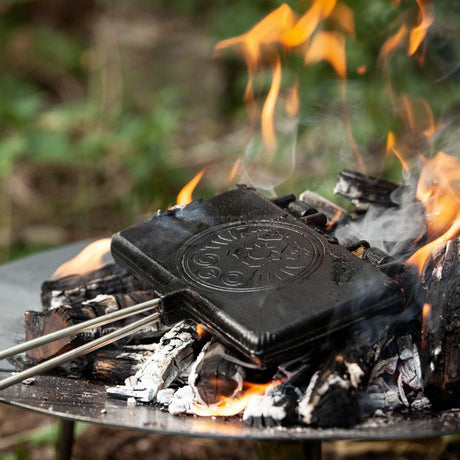Outdoor cooking follows its own rules. Where there is no stove or kitchen waiting for you, simple means and reliable tools count.
A sharp knife is the key tool here - it accompanies you from the first cut to serving. In the fire kitchen, when camping or cooking over an open fire, it must work reliably, even if the conditions are not perfect.
A good outdoor chef's knife is robust, cuts well and sits securely in the hand. It stands for precision craftsmanship - just as it has done for generations.
This article shows what you should look for in a knife for outdoor cooking, which blade shapes have proven themselves and how to keep your tool sharp and ready for use for a long time.
Table of contents
What distinguishes an outdoor chef's knife from a kitchen knife?
The most important blade shapes at a glance
Material and workmanship - what you should look out for
Cutting outdoors - work safely and precisely
Care and sharpening - for long-lasting sharpness
Conclusion
What distinguishes an outdoor chef's knife from a regular kitchen knife?
A chef's knife for outdoor use is designed to withstand stress. It has to withstand cutting on wood, cooking in windy conditions or using the knife in the rain.
While kitchen knives are optimized for controlled conditions, outdoor chef's knives need stability, flexibility and easy care.
Such a knife has:
- a full tang blade for maximum stability,
- high-quality steel that remains sharp even in damp conditions,
- a non-slip, ergonomically shaped handle - often made of wood that feels natural,
- and a robust finish that does not give way when you apply pressure.
Outdoor knives are work tools. They are made for the moment you prepare something, not for the moment you present it.
The most important blade shapes at a glance
Chef's knife - the versatile basic tool
A chef's knife covers the majority of cutting tasks. With its medium-length, slightly curved blade, it is suitable for weighing, chopping and slicing almost all ingredients - from meat to vegetables and herbs.
For outdoor use, the blade should be rather sturdy so that even harder foods can be cut up easily.
In the outdoor kitchen, this is the knife you use most often. A blade length of 17 to 20 cm offers enough surface area to cut larger ingredients cleanly. Balance is important: a knife with the right center of gravity works as if by itself - without excessive force or fatigue.

Chopping knife - for solid ingredients and rough work
With its wide, heavy blade, a cleaver is ideal for chopping meat, bones and hard vegetables. Whether beef ribs, pumpkin or bones: The weight works for you. When chopping, the blade replaces the pressure of your hand - the cleaner the grind, the more controlled the movement.
A good cleaver has a noticeable weight of its own, but is still steady in the hand. Continuous steel ensures that nothing comes loose, even when the work gets a little rougher.

Carving knife - for clean slices
When preparing meat or fish, the carving knife ensures clean, even cuts. The narrow, tapered blade reduces resistance when cutting so that the slices do not fray.
Outside, it shows its strength when you serve meat cooked over the fire.
A sharp, hand-ground steel glides effortlessly through every piece - no tearing, no crushing. The result: a clear cut and an appetizing piece of meat, just as it should be. A version with a stable blade tip is recommended for outdoor cooking, as it is less sensitive to uneven surfaces.

Bread knife - serrated blade for stable crusts
A bread knife is designed to cut hard crusts thanks to its serrated blade. A good bread knife also cuts thick crusts without crushing the bread. It is not only the serration that counts, but also the grind: even, sharp waves that grip without tearing.
It is important that the teeth are cleanly ground - so fresh bread can be cut just as easily as firm crusts or pastries with a thick crust.
A stainless steel blade with a firm structure is an advantage here, as it does not tarnish so quickly in damp conditions.
Utility knife - light, handy, precise
The utility knife is ideal for smaller cutting jobs or narrow work surfaces.
Its compact shape allows precise cuts to be made on herbs, fruit or vegetables. It is particularly practical in the outdoor kitchen because it takes up very little space, is easy to clean and stays reliably sharp.
It complements the larger chef's knife and offers the control you need for delicate work.

Material and workmanship - what you should look out for
The heart of every knife is the blade. Stainless or high-tempered steels that offer a good balance between hardness and flexibility are suitable for outdoor cooking. A high carbon content ensures long-lasting sharpness, while a carefully ground surface makes cleaning easier.
Carbon steel is particularly hard, can be precisely resharpened and retains its edge extremely well. Over time, a patina forms - a protective layer that prevents rust and gives the blade character.
Stainless steel is somewhat easier to care for, but slightly softer. Ideal if you often cook outdoors and clean the knife regularly.
Knives made in Solingen are regarded as the benchmark for precision craftsmanship. Here, the blades are hardened, ground and polished before being fitted with a handle made of robust wood - such as walnut. This results in a combination of function and durability that stands the test of time, even with repeated outdoor use.
Outdoor pruning - practical tips for consistent results
Cutting outdoors is a different kind of work. The ground is rarely perfect, the light changes and moisture can be a problem. This is precisely why it pays to work carefully and methodically when pruning outdoors.
- Solid surface: Use a sturdy cutting board, ideally made of wood, to protect the blade.
- Dry handling: The handle and blade should always be dry to avoid the risk of slipping.
- Correct technique: Use the entire length of the blade instead of applying too much pressure to the tip.
- Safe storage: Don't keep knives loose in your backpack - a leather pouch or knife sheath protects the blade and equipment.
These simple habits will extend the life of your knives considerably and ensure clean working - even away from the kitchen at home.
Care and sharpening - for lasting sharpness
A good knife needs to be looked after. After use, clean water is sufficient; for heavier soiling, a mild washing-up liquid will do. It is important that you dry the knife immediately - especially the handle if it is made of wood.
A drop of oil every now and then protects the blade and handle and preserves the natural surface.
Grinding stones with a medium to fine grit (1000-3000) are suitable for sharpening. Guide the blade at a flat angle, evenly and smoothly over the stone.
Regular sharpening not only maintains the sharpness, but also prevents you from having to remove material.
If you look after your knives regularly, you will have tools that cut reliably and retain their character for years to come - no matter how often they are used outdoors.
Conclusion
A good chef's knife for outdoor cooking is both a tool and a tool of the trade.
It must cut precisely, be safe to handle and be able to withstand outdoor use. If you pay attention to high-quality materials, craftsmanship and regular care, you will have a knife that remains reliable - cut after cut, for many years to come. Material quality, workmanship and ergonomics are more important than the brand name.
If you opt for handmade knives made from high-quality steels, you are investing in tools that will stand the test of time in any environment - and maintain the enjoyment of outdoor cooking in the long term. Because outdoors, it's not about speed, but about durability. And a knife that delivers what it promises is the most important tool you can have with you.
